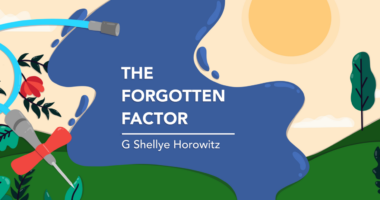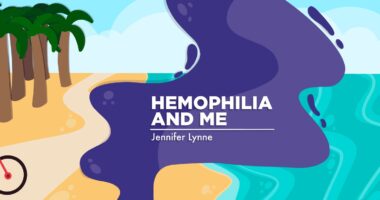Not everything is as it seems with bleeding disorders
Appearances may not reveal the invisible battles of those with hemophilia

Several years ago, I spoke at a great bleeding disorders conference in California. Around 300 people attended, and we all had wonderful interactions. The attendees engaged with one another and found hope in their shared experiences. I left the conference energized and proud to be part of such a resilient community.
When I arrived at the airport, I changed into my sweatpants, T-shirt, and Birkies for the journey home. With time to spare, I found a place to sit and process the day. People of all ages, shapes, sizes, and colors passed me. Some were dressed for business meetings while others were dressed to enjoy their vacation destinations. And something hit me.
Not everything is as it seems.
The woman in the business suit may have left a meeting to race to her dying father. The young man wearing oversized athletic wear and headphones may be preparing to start a new life. The man in torn jeans and a sweatshirt may have just sold his business for millions. And here I was, looking like a middle-aged, frumpy woman traveling alone. No one would’ve ever thought that I just gave a motivational talk to a few hundred people.
Remembering what’s invisible
This concept, of things not being what they seem, is a big part of what it’s like to live with hemophilia. It’s sure an issue for my youngest son, Caeleb, who’s 19. As a young boy, Caeleb endured severe complications because of his inhibitor. His lingering issues from that time include two damaged joints and chronic pain. He even lost mobility for a year in elementary school.
When Caeleb walks, he has a slight limp. The longer he’s active, the more significant the limp becomes. He often needs to rest and use a cane or even a wheelchair when pain flares up.
During our recent relocation, a team of movers unloaded our boxes. My oldest son, Julian, who also has severe hemophilia, moved boxes right along with the movers without issue. Caeleb helped, but his strength gave out early in the process.
At one point, Caeleb was sitting in a recliner with his leg raised because his pain was intense. He was scrolling on his phone, and I saw one of the movers glance at him. I wanted to say something. I felt the need to explain why Caeleb was sitting down when everyone else was working.
The mover must’ve thought my son was lazy and entitled. I felt it deep in my gut: that old, familiar urge to explain. To hand out the invisible medical chart. To say, “My son isn’t lazy; he’s in pain.” To defend his rest, his body, his invisible battle.
But I didn’t say anything. And I’m still unsure whether that was a sign of strength or a matter of acceptance.
When living with a chronic illness or loving someone who does, we must constantly navigate a world that doesn’t see the whole story. Is it others’ business? No, but it often feels necessary to justify rest, pain, and even disability.
Do we need permission to be believed? Does suffering need a résumé?
It’d be a remarkable shift to live in a world where belief preceded evidence. I yearn for that world for Caeleb. I yearn for a world where all who live with invisible illnesses can exist without the fear of being questioned.
Because the truth is that not everything is as it seems.
The people who face these invisible battles of chronic illness are the courageous ones. They get through each day, hoping for few or no health issues that will keep them from being productive. With strength and grace, they rise each day and continue moving despite their limitations.
Just like my Caeleb.
Note: Hemophilia News Today is strictly a news and information website about the disease. It does not provide medical advice, diagnosis, or treatment. This content is not intended to be a substitute for professional medical advice, diagnosis, or treatment. Always seek the advice of your physician or another qualified health provider with any questions you may have regarding a medical condition. Never disregard professional medical advice or delay in seeking it because of something you have read on this website. The opinions expressed in this column are not those of Hemophilia News Today or its parent company, Bionews, and are intended to spark discussion about issues pertaining to hemophilia.







Leave a comment
Fill in the required fields to post. Your email address will not be published.